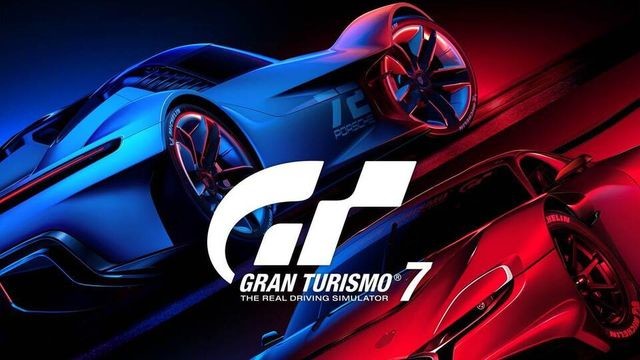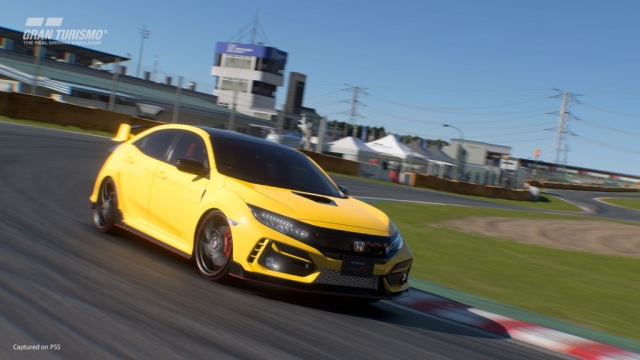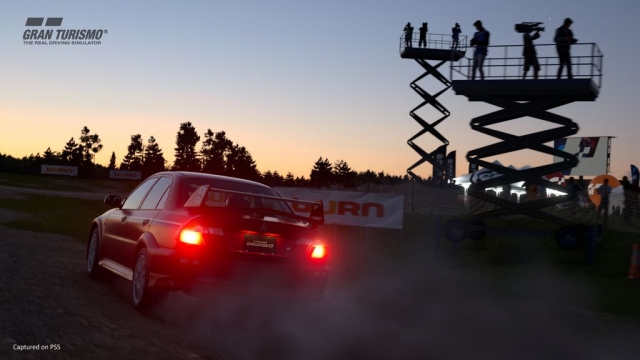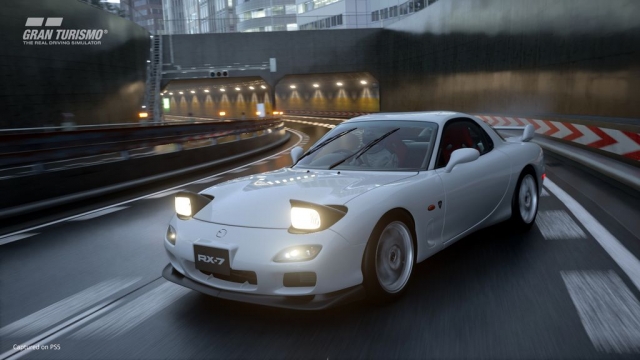Gran Turismo 7

In 1998, Polyphony changed the industry with Gran Turismo. After making a pair of fantastic kart racers in Motor Toon Grand Prix that bucked trends by having a bright art style, but with realistic physics, the studio were able to craft a magnum opus in the original Gran Turismo. It’s easy to think of sim racers as a genre in 2022, but there was nothing like that game at the time in any form. Arcade racers were about fast thrills and anything towards the menu-heavy side of things was usually kept on PC. Gran Turismo enabled players to go through the evolution of a car owner’s journey – from low-end vehicle to high-end machine with real-life touches like car washes thrown in for an extra layer of realism.
Things like license tests were new to the industry and yet became somewhat standard with games like Project Gotham Racing turning them into core parts of the gameplay loop. Over time, the series has grown from being a fantastic gaming showcase for a larger variety of cars to something that morphed into being a bit too much for its own good. The first game was a great proof of concept, while the second was rushed out and incomplete until a revision. The third was an all-time classic, while the fourth pushed the PS2 in ways few thought possible. Gran Turismo 5 was a sea of garbled menus, but did things like adding NASCAR to the mix. GT 6 fixed a few of the problems of that game, but still felt bogged down with its presentation. The series as a whole was something I have always wanted to like more than I did – and Gran Turismo 7 feels like the formula perfected in a lot of ways.
The driving model has been improved with more realistic AI and that’s something that helps keep this entry feeling fresher than past entries. The Forza series always stuck with me more due to its aggressive AI that challenged the player and that is on display here in GT 7. GT 7 also does a lot to fix prior problems with clunky menus and there is a far greater sense of a driver’s journey being completed throughout the adventure in a way that injects some Forza Horizon-style fun into the mix. This is evident right away when the game loads up Music Rally and turns a normally sim-centric game into a checkpoint racer. The end goal isn’t just to hit checkpoints, but to finish the race by the time the song ends – with a bronze, silver, and gold medal awarded for exceptional play.
The addition of this mode is genius because it puts a greater emphasis on just enjoying the racing experience than we usually see while still teaching racing principles and getting the player used to how the game feels. It does a lot of teaching without making it evident and like the starting level of Mega Man X or Super Mario 1-1, it’s a masterclass in game design because it gives the player so much insight into the game without giving much away. Just having checkpoint races in the game helps further the “arcade” vibe that the series has had a mode for since day one, but hasn’t really capitalized on much until this kind of mode. Each music track brings with it a different course and vehicle, and that leads to players getting more comfortable with different vehicles without having to consciously think about trying out a different car.
The world map is still the main hub of the game and offers up a lot of different kinds of fun within it. The coffee shop acts as a mini-mission area and keeps the player engaged with micro-tasks like collecting a certain set of a kind of vehicles, or placing in a world circuit event. It takes the normally-daunting look of a map full of many options and offers up a guided way to tackle that giant map in smaller bite-sized chunks. It’s a fantastic way to keep the player engaged because you’re always trying out something new – much like Music Rally, only with a greater sense of purpose. Knocking out an objective allows the player to earn cars, currency, or “roulette wheel” spins.
The latter are loot boxes of sorts with a wheel-style approach to offerings – only limited to a handful of options when you spin. Some spins will result in currency, while others net vehicles and racing also nets XP and that nets more spins as well. It’s not quite as nice-looking as the Forza Horizon slot machine setup, but does feel like less of a shot in the dark to actually win a vehicle. GT 7 is generous when it comes to giving players a reward for their time spent and is a massive step in the right direction for the series. There are so many quality of life improvements with the menus alone, including not only a simpler layout, but having the option of either d-pad or stick movement to navigate. For most menus, the d-pad is a lot faster – but for larger-scale menus, it’s nice to have stick controls for areas with things very close together to help avoid hitting the wrong option.
The increase in sheer fun is infused in every mode. Beyond the world map area now feeling far more organized, challenges are put in beyond just the normal license tests. Project Gotham-style missions are available to test players in a way that goes beyond just a license test and puts a different kind of objective-based option in the mix. Every race in every different mode type feels a bit different even if the core goal is always to improve well enough for a podium finish. Having core game progress gated behind podium finishes is smart, and winds up being done in a way that is more fun than usual since the difficulty can be tweaked to a degree that isn’t usually seen in this series. If you’re struggling, the player can opt to either do car upgrades to see if that’s the issue or just tone the difficulty down a bit – but there are always options to keep the player moving forward.
The idea of a simulation-based racer can be daunting, but GT 7 makes everything a breeze thanks to on-screen explanations for everything that you’re tweaking. There’s also a greater emphasis on the photo mode than in prior games, with more thought going into teaching some core principles of photography while also teaching step-by-step how to frame shots better for a racing environment. It’s clear that a lot of love and care was put into every major part of the experience and Polyphony’s love of driving has translated into a game that allows the player to have a lot of fun – instead of feeling a bit like reading through a manual in playable game form.
DualSense implementation is fantastic and enables things like haptic feedback during Music Rally to time rumble with the music beats. For core gameplay, players can enjoy more intricate braking with the adaptive triggers. These allow for a greater level of immersion because a light touch on the trigger results in a light touch on the in-game brakes. However, like with using adaptive triggers on a shooting game, it can be a hit or miss prospect. The advantage of having the work is that it’s there for folks to enjoy, but given that there is a bit more of a learning curve compared to the usual usage of triggers for braking, it might not be for everyone. I liked using it for fun races like Music Rally, but greatly preferred a more normal trigger feel for competitive races. In both the PS4 and PS5 versions, the player can opt for face button braking and acceleration alongside using the gyroscope for steering – so no matter which console you have, you’ll be able to enjoy smooth controls.
Visually, both the PS4 and PS5 versions are impressive – but the PS5’s hardware is used to great effect to provide a better overall experience. PS5 users can choose to play at a higher resolution with lower frame rate or go with a lower resolution and higher framerate alongside ray tracing. That method produces the best overall look as it is smoother to race in and offers stunning environmental details. On the PS4, cars have a good reflection model in place – but it’s taken to a whole other level on the PS5. Chrome and sunlight collide in ways that replicate real-life far better there, while environmental reflections on tile in tunnels are incredible to see unfold in real-time.
Gran Turismo 7 is a stunning game, with a lot of trackside detail making it feel like the real-world. Tokyo especially just pops at night on the PS5, but it’s amazing just how much detail is retained on the PS4. Car models are quite impressive there and if you didn’t have the PS5 version to compare it to, it is still a gorgeous-looking racer on that platform. The presentation is hurt a little bit by the format of having a talking head in speech bubble form as the main method of dialogue. It feels a bit too much like a mobile game in that regard and the pseudo-lootboxes and ability to use real-world money to earn in-game credits for cars don’t help that feel either. That particular part of the game is something that will hopefully be addressed later on with a patch because it does feel like a pay-to-win mechanic.
The Gran Turismo series has always been known for having a diverse soundtrack, and it’s on greater display than ever before now thanks to Music Rally. Classical, dance, pop and just about everything is covered in some form to race to and it leads to no two races ever feeling exactly the same. Having the beat of music pulse through the controller on the PS5 in Music Rally is a fantastic little touch and one that adds a layer of immersion to the experience that couldn’t be foreseen. The sound design as a whole is strong too, with close races resulting in a thrilling engine roar as everyone jockeys for position – this really shines with a surround sound system or 3D audio headphones, but the point is still gotten across with standard speakers.
Overall, Gran Turismo 7 is the greatest entry in the series to date and the perfect gateway game for those who are lapsed fans of the series. It takes everything the series has done right while cutting back greatly on things that have bogged it down over the years and outside of the lootboxes, feels like about as perfect an entry in the series as one could imagine. The completely restructured career mode makes for a far more fun and engaging experience and the menu overhaul makes everything so much easier to do. It looks great, plays near-perfectly, and is the exact kind of game I always wanted from the series. Simply put, Gran Turismo 7 is a must-buy for racing fans.
Reviewed By: Jeremy Peeples
Publisher: Sony Interactive Entertainment
Rating: 98%
——————————————————————————–
This review is based on a digital copy of Gran Turismo 7 for the PlayStation 5 provided by Sony Interactive Entertainment.
 Game Over Online
Game Over Online







